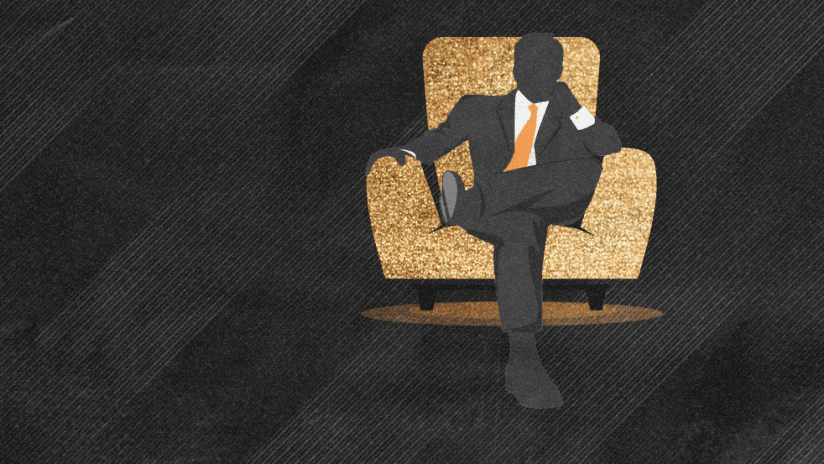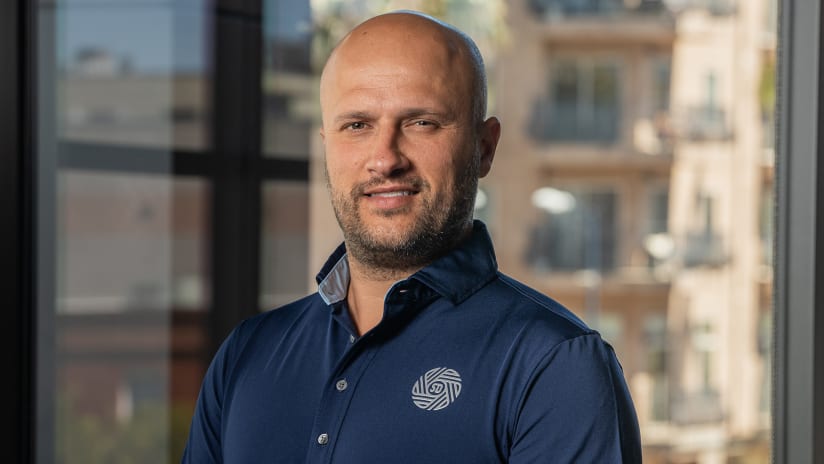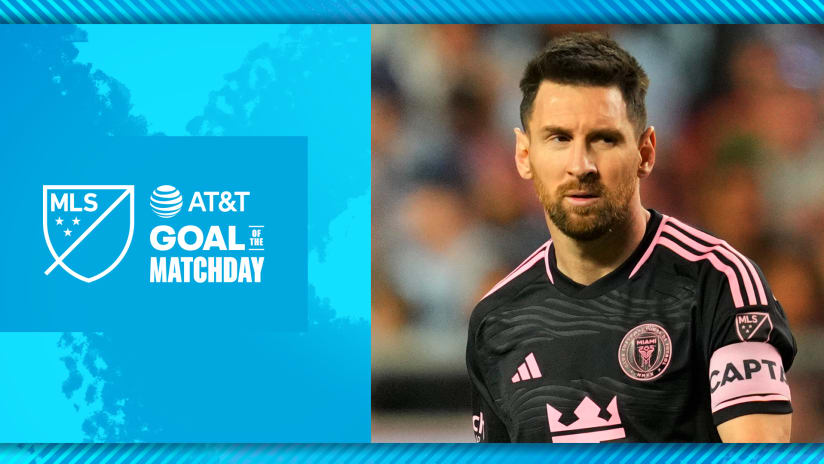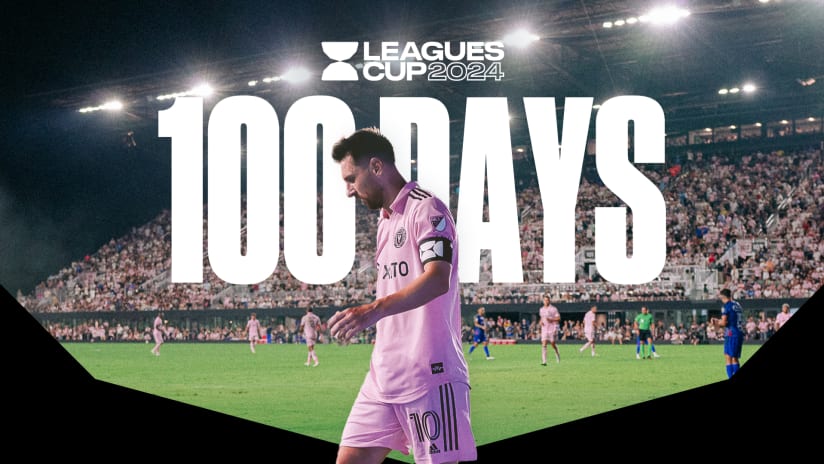The January camp to measure all January camps by came way back in 2002, and to be perfectly honest, it's more than a little bit disingenuous to consider that a "regular" January camp. That's because way back in 2002 Concacaf, for some reason, decided to play the Gold Cup in the winter.
US men's national team manager Bruce Arena made good use of the tournament, steering the US to a victory (2-0 over Costa Rica in the final) and, much more importantly, discovering a few contributors along the way.
Two of those are essentially Hall of Fame-level USMNT players: DaMarcus Beasley and Pablo Mastroeni. Mastroeni's performance was particularly impressive, and arguably the most necessary – starting d-mid Chris Armas would bust his knee a couple of months later, which opened the door for Pablo to become a starter at the 2002 World Cup. He made the most of those minutes, and was a key piece as the US made it all the way to the quarterfinals.
No January camp, no run to the final eight.
The stakes weren't so high in 2019, given it's not a World Cup year and it was just a pair of friendlies. But it sure was nice to see new head coach Gregg Berhalter get his group to dive right into the world of Concacaf with a pair of dominant, leave-no-doubt friendly wins.
Here, watching from afar, were who I perceived to be the biggest winners:
9) Christian Ramirez, F (LAFC)
Everybody knows Ramirez can poach, which he showed in the 3-0 win over Panama. He has a knack for being in the right place at the right time, and he's calm in the box.
His movement in possession was also very good, though, and in MLS terms he picked up a secondary assist on Paul Arriola's capper against the Ticos. He's never been known for his donkey work as a center forward, but there he was, using his head to create the platonic ideal of a Cardiff City goal:
The only reason he's not higher is he only got 18 minutes. I wish we'd seen him more.
My guess is we'll get our chance in March.
8) Corey Baird, W (RSL)
This pick caused a bit of controversy when I included Baird on Twitter, but I'm standing by it.
Modern soccer is about team shape and specific function/fit, and for certain types of wingers 98 percent of the game happens off the ball. They are asked to stay wide, make runs at the right time and make the pitch big for the guys in central midfield.
Baird is superb off the ball – he makes his runs earlier and more reliably and with more attacking intent than any other winger in the pool, save Christian Pulisic (Tim Weah may get there soon, though he's playing more as a forward for Celtic). His final touch wasn't quite there against Costa Rica, but his foundation is so good, and he fits the role – get chalk on your boots away from the action – so well. By doing what he does, he opens up space for the central midfield, pulls defenders toward him and then when the opportunity presents, he runs in behind. This simplifies the game for the guys in the engine room.
My guess is he's now fourth of five on the winger depth chart, which is a huge win since he was "I wonder if he'll get called into camp?" a month and a half ago. More than that, though, is Berhalter can be certain that with Baird out there, the team shape and spacing will be what they need to be.
His first and final touches will improve as he comes into season, by the way. If this past game was played in May he'd have had 1g/1a because he was repeatedly in the right spot doing the right things.
7) Walker Zimmerman, CB (LAFC)
Of the two center backs, Zimmerman's the one who stood out most. In a lot of ways that's a good thing – his damn near off-the-charts athleticism is a real weapon, which allowed Berhalter to use the unusual tactical approach in which the right back dove inside to central midfield. You need a right center back who can really move, and who relishes defending in space, in order to make that gambit work defensively.
That describes Zimmerman perfectly. And his distribution, especially in the first 25 minutes against Panama, was noteworthy. He was repeatedly breaking lines and playing to the feet of checking attackers in the pockets.
But I dropped him down about five spots because in both outings, as the game progressed his decision-making on those passes deteriorated. He gifted Los Canaleros their best chance by unnecessarily forcing a pass midway through the second half, and then did nearly the same thing against Costa Rica.
Zimmerman has the tools to be the best CB in the pool. He has to cut out the one or two big, potentially game-losing mistakes per game.
6) Michael Bradley, DM (Toronto FC)
There's still only one guy in the pool who hits this pass:
Bradley was excellent in his 90 against Panama, and I have to admit I'm dying to see what he can do over the next 18-24 months in a system as structured and delineated as Berhalter's. I think he'll thrive.
Worth noting as well that Wil Trapp played the best 45 minutes of his national team career in the second half against the Ticos, and both guys won, on some level, by holding off the younger Russell Canouse for at least another month.
If he stays healthy, my guess is we'll see Bradley starting this summer in the Gold Cup.
5) Paul Arriola, W (D.C. United)
We know, at this point, the type of winger Arriola is: A dogged and committed two-way winger who adds as much defensively as he does in attack, someone who can be your fourth-best offensive threat – a plus alpha and not necessarily more than that.
Or maybe we only thought we knew that. Arriola was more than just a little something extra against Costa Rica: he was a constant threat to get on the ball and create, or to run in behind. Most of the best US movements throughout the game came through him, and he absolutely deserved that goal to ice the result.
I'd wondered if Arriola would provide enough attacking push to work in Berhalter's system. The early results are promising.
4) Jonathan Lewis, W (New York City FC)
Two assists in 44 minutes across two games, and as with Baird, Lewis rings the "perfect fit" bill: A game-changing super-sub who can and does eliminate opposing defenders off the dribble, then has the chops to pick the right pass:
Lewis now has 3g/6a in 606 combined MLS + USMNT minutes. It's a crime NYCFC haven't gotten him out on the field more, and given that they keep buying new wingers it looks like he may be destined to spend another year rotting on the bench.
This makes zero sense.
3) Sebastian Lletget, CM (LA Galaxy)
One of the things that was missing for the first hour of both games: An attacking central midfielder who, when receiving the ball in those pockets between the lines, had the skill and confidence to turn and create, either off the dribble or via the pass. Lleget brought something to the table that the other midfielders didn't, and that few in the player pool do:
I don't agree with the bottom three names on Bobby's list, but I sure do agree with those first two. Lletget relishes getting on the ball in those spots and was the clear Man of the Match in his home town against Costa Rica, grabbing a goal and an assist. That came a week after he was a game-changer against Panama.
The only reason he's not No. 1 here is because he didn't start either game. But if we had a must-win qualifier tomorrow, Lletget's the guy I'd want to see in that No. 10 role.
2) Aaron Long, CB (RBNY)
You didn't notice Aaron Long at all over his 180 minutes, did you? That's because he made zero mistakes.
He wasn't as adventurous as Zimmerman, but I don't care: Just give me a CB who makes all the plays he needs to defensively and keeps the ball moving in possession. Long did both.
As with Lletget, if there was a must-win qualifier tomorrow, I hope Long would be starting.
1) Nick Lima, RB (San Jose Earthquakes)
The bizarre and wonderful tactical approach Berhalter used – a 4-3-3 in deep build-up that morphed to a WM in possession, with Lima sliding in from right back to central midfield, is only possible if you have someone who can actually slide in from right back to central midfield.
Here's Lima doing his best Steve Cherundolo impression:
Lima played the position in a way it's basically never been played for the US, and in a way it's only played by a few teams on the international level. In Berhalter's words he was the "Coach's Man of the Match" vs. Panama, and his level was high once again vs. the Ticos.
“It was because of the complication of what we asked him to do and how he dealt with it,” Berhalter said of Lima after the Panama game. “It’s not easy to ask your right back to get the ball with his back to goal or to ask him to create space in the midfield, but he did a good job of it.”
Can the assumed starting right back, DeAndre Yedlin, shift between those roles so easily? I have my doubts, as do others. And now Lima has gone from "wow, I'm surprised to see he got the call for January" to "wow, I'll be surprised if he doesn't get the call for the Gold Cup come June." Nobody made a bigger leap this past month than Lima did.
A note on Djordje Mihailovic and Cristian Roldan:
Mihailovic and Roldan were tasked with playing as "dual 10s," according to Berhalter. They were the central midfielders in the 4-3-3 who were supposed to be the ones getting on the ball between the lines, creating chances and getting on the board.
Both had up-and-down performances. Roldan, as per usual, found a bunch of the game and put in a smart and delightfully rugged defensive performance. But he's still not a creative passer of the ball, and he didn't finish the chance he should've, and when he gets into those spots between the lines, he lacks the technique or burst to do real damage on the turn. He can't shrug off defenders or eliminate them via the dribble, and thus it's tough to ask him to be a creative fulcrum.
So in my mind, Roldan left this camp in the exact same spot he started it: A reliable cog who is keeping that spot warm for Weston McKennie. He is this generation's Alejandro Bedoya – and I mean that as a compliment in a "you can always rely on him, but you'd damn well better not ask him to win the game for you" kind of way.
Leaving off Mihailovic was a more divisive choice of mine. The 20-year-old played the higher, more attacking of the central midfield roles (he really was a 10, while Roldan was an 8), and he got himself the game-winning goal against Panama. He also, as per usual, got into a ton of good spots and found the ball repeatedly in great positions.
Mihailovic, though, lacks a critical piece to be a top central midfielder: He does not play well on the half-turn. If you can't receive the ball in those spots then you become a choke point for build-up play:
Unlike Lletget, he doesn't currently appear to have the technique to turn "got the ball in a great spot" into "created a great moment." Unlike Baird, he's not playing a position where most of the game happens away from the ball.
As the map above shows, Costa Rica showed how he can be targeted in the first half. Better, more experienced teams, will do worse to him.
According to his teammates Djordje's young and smart and, by all accounts, a soccer junkie. I bet he'll work on his technique on the half-turn and improve upon it – though I feel it's the type of thing that can only be improved upon by so much. There's an element of "you've either got it or ya don't" to a player's ability on the half-turn.
Regardless, I hope he gets a ton of time with the Fire this year – he should easily be a starter for Chicago – and a ton more with the US U-23s. His brain and his vision in the final third give him a chance to grow into a game-breaking type of player, but at least for this camp, his limitations were on display as much as his gifts.









